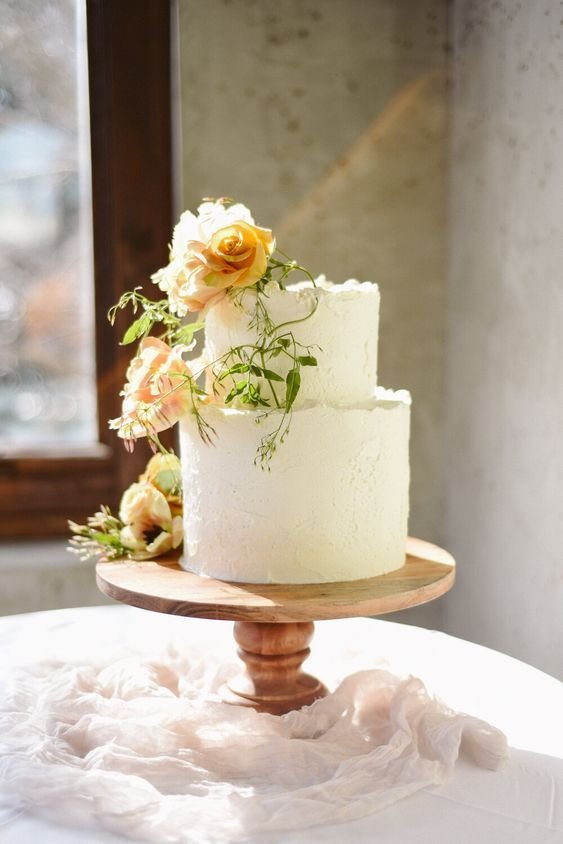A Photographer's Guide to Stunning Wedding Flower Arrangements - Elevate Your Bridal Imagery with Blooms and Beauty
Wedding photography is an art where capturing the essence of love and beauty is paramount. The photographer's lens is the medium that brings each love story to life.
Each photo, with its interplay of colors, finesse of textures, and the way light dances on the petals, contributes significantly to the narrative, adding emotional depth to the wedding album.
This guide is dedicated to photographers looking to expand their niche or elevate their skills, focusing on the delicate art of photographing wedding flower arrangements. Here, we look at techniques that transform ordinary shots into lifelong memories.
Lighting Techniques for Floral Brilliance
Mastering lighting is crucial in elevating the beauty of floral arrangements in wedding photography. The right lighting can transform flowers from simple natural elements into vibrant, ethereal subjects.
Natural Light
Utilize natural light to its fullest potential. The soft, diffused light of early morning or late afternoon can cast a magical glow on petals and leaves, highlighting their delicate textures and colors. Additionally, positioning the blooms in a way that captures the gentle interplay of light and shadow can add depth and dimension to your images.
Artificial Light
When natural light isn't sufficient, artificial lighting comes into play. Use it to mimic natural light or create dramatic effects. A well-placed flash or reflector can illuminate the intricate details of a bouquet, making colors pop and giving life to each flower.
Backlighting
Experiment with backlighting for a dramatic and artistic effect. Consider positioning the light source behind the florals to create a luminous outline, emphasizing their shapes and adding a dreamy quality to the photograph.
Diffused Light
Soften harsh lights with diffusers. They help in evenly spreading the light, reducing shadows and harsh contrasts. This technique is particularly effective in showcasing the colors and velvety textures of the floral arrangements.
Essential Shots to Capture Floral Arrangements in Wedding Photography
Capturing the full essence of flower arrangements in wedding photography requires a thoughtful approach to shot selection.
Here are key shots that should not be missed:
The Bridal Bouquet
This is a must-capture item. Take close-ups to detail the intricacy of the bouquet, and also include shots of the bride holding it. Experiment with angles and backgrounds to highlight the bouquet's colors and textures.
Boutonnieres and Corsages
Often overlooked, these small flower designs are significant. Capture them both before they are worn and as part of the wearers' attire, focusing on how they complement the wedding outfits.
Table Flower Decorations and Centerpieces
These shots showcase the theme and style of the event. Capture both wide shots that display the layout of the tables and close-ups that highlight the details and craftsmanship of the centerpieces.
Ceremony Floral Arrangements
Document the setup at the ceremony location, such as altar arrangements, aisle decorations, and any floral arches. These flower arrangement photos should capture both the scale and the finer details within the ceremony space.
Reception Decor
Similar to the ceremony, capture the flower arrangements at the reception. This includes any floral accents on the cake, hanging installations, or decorations on the sign-in table.
Floral Details in Bridal and Groom Attire
Sometimes, floral patterns or accessories are part of the bridal dress or groom's attire. Capture these details to highlight the floral theme consistency.
Candid Moments with Blooms
Look for candid shots where guests interact with the floral elements, like smelling a bouquet or admiring a centerpiece. These shots add a dynamic and human element to your photography.
Post-Processing: Enhancing Floral Images
Post-processing plays a pivotal role in enhancing the natural beauty of floral arrangements. This stage is where the photographer's vision comes to full fruition, transforming good photos into great ones.
Color Correction
Start with basic color correction to ensure the hues are true to life. This step is crucial for accurately representing the hues and tones that the couple chose for their special day.
Contrast and Brightness Adjustments
Adjusting the contrast and brightness can help in making the details pop. Be mindful not to overdo it; the goal is to enhance the natural beauty, not overshadow it.
Sharpening Details
Slight sharpening can bring out the finer details in petals and leaves, adding depth and texture to the image. This is particularly effective for close-up shots of bouquets and boutonnieres.
Background Blur
Softening the background through selective blurring can make the arrangements stand out more prominently. This technique is useful in focusing the viewer's attention on the flowers.
Saturation Adjustments
Play with the saturation levels to enhance the vibrancy of the blooms without making them look unnatural. This can be especially impactful for bouquets and centerpieces, where the colors play a significant role in the overall aesthetic.
Practice Makes Perfect: The Trial Shoot
The journey to mastering wedding photography, particularly the art of capturing floral arrangements, is paved with practice and experimentation. An essential part of this process is the trial shoot, where you can explore and refine your techniques in a controlled environment.
Additionally, to effectively showcase your skills to potential brides during the consultation or trial process, consider purchasing flowers for wedding online. Having a variety of florals on hand for these shoots offers an excellent opportunity to demonstrate how you handle and capture the floral elements they might choose for their wedding.
Final Thoughts
By understanding the nuances of lighting, composition, and post-processing, photographers can elevate their bridal imagery, turning fleeting moments into timeless memories. Embrace these techniques to not only enhance your skills but also to vividly showcase the beauty and emotion of each wedding day, making every photograph a cherished keepsake for couples.
Get Free Presets for Lightroom created by top photographers to update your presets collection, save down on editing time, and open up new artistic horizons.



















